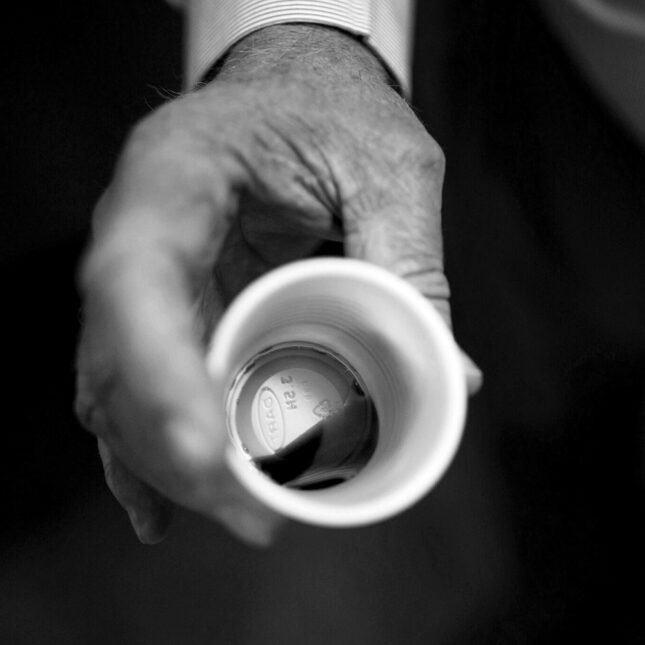
The Biden administration isn’t doing enough to ensure people living in recovery housing have access to gold-standard addiction medications like methadone and buprenorphine, according to a coalition of health care, harm reduction, and addiction recovery groups.
The discrimination that people often face when seeking treatment using methadone or buprenorphine, the groups say, is especially pronounced within recovery housing facilities, which typically offer lodging coupled with counseling and other social services. Many facilities have historically refused to admit people taking addiction medications, effectively treating their use as akin to using heroin or fentanyl. While attitudes have evolved and outright bans on methadone or buprenorphine have become less common, the practice persists.
Failing to offer all forms of medication-assisted treatment runs afoul of both federal guidance and the Americans with Disabilities Act, the groups wrote in a letter to Miriam Delphin-Rittmon, the director the Substance Abuse and Mental Health Services Administration. They urged the agency to update its compliance practices and use all available enforcement tools to ensure its grantees are offering evidence-based care.
“If you’re getting federal funding, you need to follow federal law,” said Sally Friedman, the senior vice president of legal advocacy at the Legal Action Center, a New York-based nonprofit participating in the effort. “Prohibiting people from taking a lifesaving medication for opioid use disorder is discrimination — it’s as simple as that.”
Decades into the U.S. drug crisis, lawmakers, public health officials, and much of the addiction recovery community itself have come to recognize the value of methadone and buprenorphine, medications that quell cravings and withdrawal by binding with the brain’s opioid receptors.
The medications are highly effective: An oft-cited study from the National Institute on Drug Abuse estimates that overdose death rates among people taking methadone and buprenorphine are 59% and 38% lower, respectively, than people not receiving medication.
But because methadone and buprenorphine are opioids themselves, they have long faced intense stigma from people who view them as simply swapping in one addictive substance for another. Even though the U.S. is currently experiencing over 80,000 annual deaths from opioid-involved overdoses, recent data suggest that barely 1 in 5 Americans with opioid use disorder receive treatment that includes medication.
In recent years, advocates have pushed to loosen restrictions on both medications. Community groups ranging from churches to syringe exchange services have worked to reduce stigma surrounding medications for opioid use disorder, as they are known, and civil rights groups and federal prosecutors have brought lawsuits to ensure incarcerated people can access addiction medications.
The Biden administration has also identified MOUD as a key pillar of its response to the ongoing drug crisis. In 2022, President Biden signed a new law that eliminated red tape for buprenorphine prescribers, and earlier this year, SAMHSA finalized a significant liberalization of the regulations governing methadone clinics — the first major update to the methadone treatment system in over 20 years.
The effort to force recovery housing systems into compliance includes major nonprofit groups focused on the drug crisis, like the Legal Action Center, Vital Strategies, and Drug Policy Alliance. It also includes researchers and health providers, like the Mayo Clinic and Yale Program in Addiction Medicine, as well as smaller local harm-reduction groups like Philadelphia’s Savage Sisters Recovery, the San Francisco AIDS Foundation, and Prevention Point Pittsburgh.
“We’ve got to make sure that we have the recovery community keep up with the ADA,” said Toni Young, the executive director of the Community Education Group, an Appalachia-based nonprofit that spearheaded the advocacy campaign. “We want to get SAMHSA to educate its grantees. That’s the goal — not necessarily to rap them all on the knuckles.”
SAMHSA guidance already requires recovery housing organizations receiving some agency grants to specify how they are facilitating access to addiction medications. More broadly, the Department of Justice issued guidance in 2022 stressing that the Americans with Disabilities Act bars discrimination against people taking medications for opioid use disorder.
Much of the recovery housing community is already on board — at least nominally. The National Association of Recovery Residences also warned in 2018 that categorical bans against people taking MOUD would violate federal law.
While policies are on the books, however, the coalition behind the letter says little is being done to enforce them: As the letter states, organizations receiving SAMHSA funding can ignore the agency’s guidance with “little repercussion.”
“Recovery housing is supposed to help people recover,” said Friedman, the Legal Action Center attorney. “It’s not supposed to hinder their recovery. As a federal agency, SAMHSA’s job is to make sure that’s happening.”
Amid a crisis of fentanyl use, coupled with stimulants like cocaine and methamphetamine, Young argued that banning recovery housing residents from taking methadone or buprenorphine is akin to encouraging relapse.
“If you’re going to say, ‘You don’t have a right to housing, and you don’t have a right to employment,’ you’re driving folks back to actively using,” she said. “That is a bananas philosophy.”
STAT’s coverage of chronic health issues is supported by a grant from Bloomberg Philanthropies. Our financial supporters are not involved in any decisions about our journalism.
To submit a correction request, please visit our Contact Us page.











STAT encourages you to share your voice. We welcome your commentary, criticism, and expertise on our subscriber-only platform, STAT+ Connect